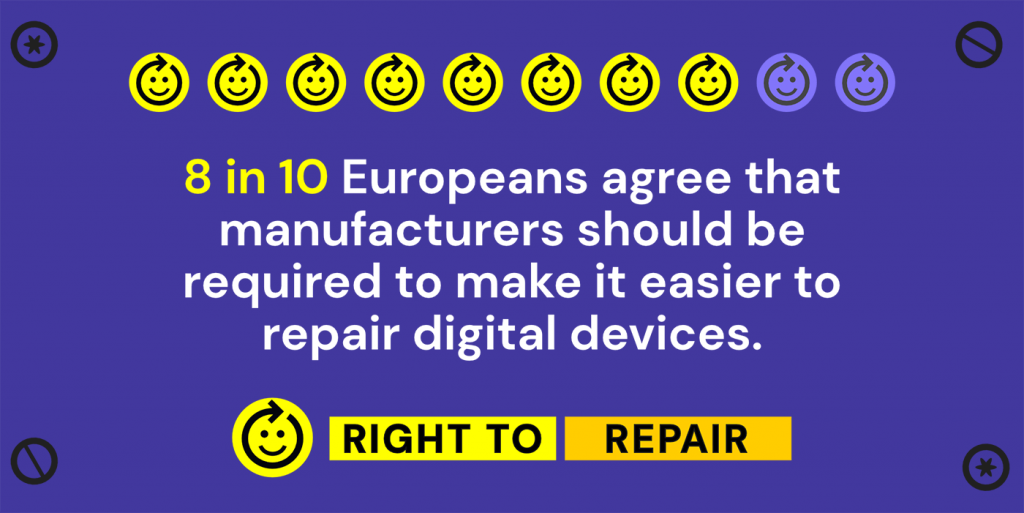The European Commission’s Circular Economy Action Plan unveiled today hits all the right notes to make ‘right to repair’ a reality in Europe. Promises will now need to be matched with concrete initiatives.
The five-year blueprint outlines actions envisaged by the European Commission in order to move away from the wasteful take-make-use-dispose economic model towards a system where sustainable products, services and business models become the new normal. In recognition of frustration that our stuff breaks down too quickly and cannot be reused, repaired or recycled, it also promises a ‘new right to repair’ to be established as a key lever of change.
While the strategy remains thin on the details, it provides plenty of reason to feel hopeful. Not only does it fill the urgent need for a policy framework that prevents wasteful consumption and built-in obsolescence of many of our products starting with consumer electronics, it also promises to empower consumers to make more informed choices about their purchases.
All this is welcome news – for the environment and the eight in ten Europeans who think that manufacturers should be required to make repairs and replacement of parts easier, as well as the over 20,000 signatories of our petition to the EU’s leadership who want to see products be designed to last longer.

What must happen next
The first test case for the Von der Leyen Commission will be the publication of the forthcoming Ecodesign Work Plan. Intended to be adopted later this year, the document will guide Commission’s work on many of the most wasteful products until the end of its mandate. For expectations set today to be met, this will need to include concrete steps aimed at tackling all of the most wasteful and unrepairable products present on the market today, starting with smartphones, printers, laptops, and other ICT devices. The European Parliament is also developing its own initiative report on planned obsolescence and longer lasting products that will inform the policy direction going forward.
“We welcome the Circular Economy Action Plan as a first step towards preventing our electronics from becoming waste and making repair commonplace in Europe. Today’s strategy will now need to be translated into concrete measures that make our products repairable by design, inform consumers about their repairability, and establish an unrestricted access to repair manuals, software updates, and reasonably-priced spare parts”
What’s in it for repair in the Action Plan?
Sustainable product policy legislative initiative that aims to improve, among other sustainability aspects, repairability of all products on the European market and counter premature obsolescence – electronics and ICT products are identified as a priority
Revision of EU consumer law to establish a new ‘right to repair’ and provide point of sale information on lifespan of products, as well as availability of repair services, spare parts and repair manuals
Circular Electronics Initiative, with focus on mobile phones, tablets, laptops and printers and including focus on both hardware and software as well as the introduction of common charger
Revision of economic instruments to enable Member States to use VAT rates to promote repair services
For more information:
Chloé Mikolajczak / Right to Repair Campaigner
+32/486.31.18.14
chloe@therestartproject.org

Finally right decision, people cannot buy every little crash another phone or tv or which if is
effective, big, relevant, long term ….
Great!
Renzo
Yes, at last they have realised that this is the best way.
I was so sad when they stopped selling my favourite phone without the ability to change the battery just by taking the back cover of.
Today you ruin the guarantee if you want to change battery by yourself.